
PROGRAMACIÓ ANGLÈS INFANTIL P3
1r trimestre
|
2n trimestre
|
3r trimestre
|
|||||||
September
|
October
|
November
|
December
|
January
|
February
|
March
|
April
|
May
|
June
|
Introduir rutines
Hello, What’s your name
song
Hello song
Cookie says song (sit
down, stand up, hands up hands down)
|
Beeper counts story (1, 2, 3, and 4)
Are you happy?
(happy/sad)
Weather
(sunny/cloudy)
Halloween song
|
Class name Rhyme song:
Tortoise
Rainbow song
Colors
Elmer story (colors)
English nursery rhymes:
Baa Baa Black Sheep
|
Colors
Brown bear story
Christmas Carol
We Wish You a Merry
Christmas and story (Father Christmas has poo)
|
Toys: Dolly, teddy bear,
ball
Toys song
|
Days of the week
“Today is Monday story”
Valentine’s
day
|
I
am the music man song/story
Instruments
|
Family
“5
little owls”
Family
members
Easter Egg hunt
|
Old Mcdonals has a farm
Farm animals
|
English
nursery rhymes:
Hickory
Dickory
Round
In the garden
The
wheels on the bus
|
September

Say Hello – Preschool Hello Song #1
Say hel-lo! hel-lo! Say hel-lo! hel-lo!
Say hel-lo! hel-lo!, Say hel-lo! hel-lo!
Clap your hands, clap! clap! clap! (repeat x 3)
Stamp your feet! stamp, stamp, stamp! (repeat x 3)
Curl up small, very small (repeat x 3 )
Let’s stand up, stretch up high, (repeat x 3 )
Say hel-lo! hel-lo! (repeat x 3 )
(you can change hello to goodbye and sing the song at the end too!)
A little chat with little people
Something I usually do with my very young learners at the beginning
of the scholar year, is to help them learn how to have a little chat.
Why do I do that? Very simple, if since the very beginning of the
scholar year they see some instant results, they will be very happy and
pleased with themselves seeing they are able to communicate with
others in English after only a couple of lessons. That will mean
motivation and excitement to go on learning words and sentences and
finding a situation in which to use them (the English class, or not!).
In this case, the goal is to be able to have this chat in twos:
1 – HELLO
2) HELLO
1 – WHAT’S YOUR NAME?
2) MY NAME IS_______
1 – OH, MY NAME IS_______
2) NICE TO MEET YOU!
1 – NICE TO MEET YOU, TOO!
First of all, I tell them a very short and simple story called “What’s your name?” which I found in kidsenglishbooks.com. I tell them they are going to see some animals getting to know each other:
As you can see, it is a very repetitive story, which is great because
young children love easy repetitive stories. If you tell it, you will
see that before you end the story, your pupils will start saying “What’s
your name?” before you do it every time you show a new slide. Feeling
you are part of the story is a fantastic sensation everybody enjoys, so
imagine how little children live it!
After that, I give them this worksheet where they have to finish the
sentence “My name is…” by writing their names in upper case and then
tracing it and decorate the page using markers (they love markers more
than crayons!!!)
Once they have all traced and decorated their names, we hang them on the classroom walls. If you want, you could make yours as well, my pupils always find it amusing when I take part in the games and activities doing exactly the same they are asked to do.
There is this excellent song that goes with
the story which I also like using in class and my pupils love singing
and dancing it with me. We all stand up in a circle and every time we
sing “what’s your name?” we look at the person next to us (first on the
right, then on the left), when we sing “my name is…” each of us yell our
own names and when we sing “nice to meet you” we shake hands with the
person next to us (first on the right, then on the left).
Finally, the big moment!!! I ask my pupils to stand in front of the
class and perform the little chat I mentioned at the beginning of this
post. They do it in pairs and they have to shake hands when they say
“nice to meet you” (they usually giggle when doing it, they find it
funny!). I ask them to perform it several times with different partners
so they get used to collaborate with all their classmates.
I suggest you film them and then show them the video. They will
really like seeing themselves speaking in a language that is not their
mother tongue.
COOKIE JAR
________________________________________________
Learning some colours with… Pocoyo!!!
Using our pupils interests to catch their attention in class is the best way to create motivation. The days I keep an eye in the playground during break time, I like speaking with them about the tv programs, songs and films that are popular at the moment. Believe it or not, it is precious information! Moreover, they will look at you differently if you can have a chat about the singer, tv character or whoever is most popular at the moment. It is a good investment of time doing a little research on the internet or even watching some of episodes of the cartoons or tv series they like in order to be updated on what is cool for your pupils.
I remember a few years ago when some students asked me to play some Miley Cyrus songs (when she was still cute!!!) and I was able to sing one by heart and even dance the choreography. For a few days I was the star of the school, they couldn’t believe their teacher liked the same music! I must say I love dancing, so it wasn’t much of a hassle for me
In the case I want to share today, I use the adorable and cute Pocoyo TV program to help my little pupils learn the name of some colours in English. At the moment, Pocoyo and Dora are the stars, so I try to include some of their episodes in my lessons.
This is the episode about colours that I use in class:
Once we have watched it, I like playing some TPR games. For these games I prefer to use some colourful scarfs but it is also possible to use flashcards.
Some of the games we play are:
– “who is wearing something…?” They have to put their hands up and say “ME!” if they are wearing the mentioned colour.
– “If you wear….” Depending on the colour I show, they have to do certain movements such as stand up, twirl, jump, clap hands, etc.
– “Find something…” I show them a colour and they have to find an object in the classroom that is the same colour.
– “Colourful catwalk” I tell them to put one of the colourful scarfs on and if they choose the correct one they can model around the class showing the scarf off. (Girls love this game!)
If you have a computer, a tablet or a smartboard in class, you can play theseonline games altogether:
I’m a party person, and I also enjoy having parties with my little pupils. This is why I like organizing the Balloon Party with them. What does it consist of? Very simple, I give them some balloon templates that they have to colour and then punch out. When everybody has finished their balloon, we display them on a wonderful poster to decorate the classroom.

________________________________________________________
Our Face
With my very young learners, I start focusing on the parts of the face instead of dealing directly with the whole body. However, if during the lessons any other body part needs to be included because they are curious about it, I do it naturally.
I always try to introduce new topics through a story, it helps them to have a context. Besides, they simply love being told stories and never get tired of them Usually, when I finish telling them one, there is always a child asking ” Can you tell it again?” and the rest of them join agreeing with him. It always makes me smile
Anyway, the story I use in this case also belongs to the Hello Rabbit classbook and it is called “Buzz Buzz Buzz”. I find it quite cute and suitable for them. Next, you have the video I made using the storycards and the audio that comes with the teacher material:
To be able to roll play the story and pretend that a bee is actually on their eye, ear, nose or mouth; I have a fantastic BEE soft toy that I make fly around the classroom and it falls on their little faces making them giggle like crazy.
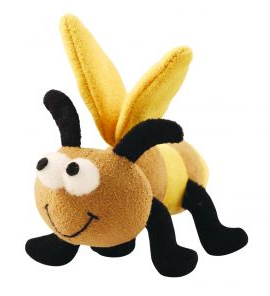
Using soft toys in class is a great idea when you teach very young learners. It helps them being connected to what is going on and they will relate the soft toy to the knowledge that they are meant to acquire. I try to find soft toys related to the topics I teach as often as I can, but I know it cannot always be possible.
Another material are the flashcards, with which you can play some TPR games with the pupils until you see they start feeling confident enough to play other games where they need to start saying the key vocabulary.
You can use these flashcards focusing on the parts of the face that are mentioned in the story: ear, nose, mouth and eye.
Obviously, there is also a great song that will help your pupils integrate this vocabulary. They have so much fun dancing and singing this catchy tune that they will noe realise they are acquiring knowledge! This is a good moment to use the soft toy as well. As they sing, they can pass the bee and place it where the songs says it is.
If you are able to use a smartboard in class or any other device with internet connection that your pupils can use, I have these two links with a couple ofonline games that they will enjoy playing:
____________________________________________
HALLOWEEN!!!
I adore celebrating festivals with my pupils. The best way to let them know a bit about the English speaking countries culture is through music. That is why I have selected three songs that always work well with very young learners since they are not too scary:
There is also this cute story that can perfectly match being told in Halloween. It is called “That’s not my monster”. I told it to 3 year old pupils and they simply adored touching the book pages!
Learning colours with Elmer the Patchwork Elephant
Using th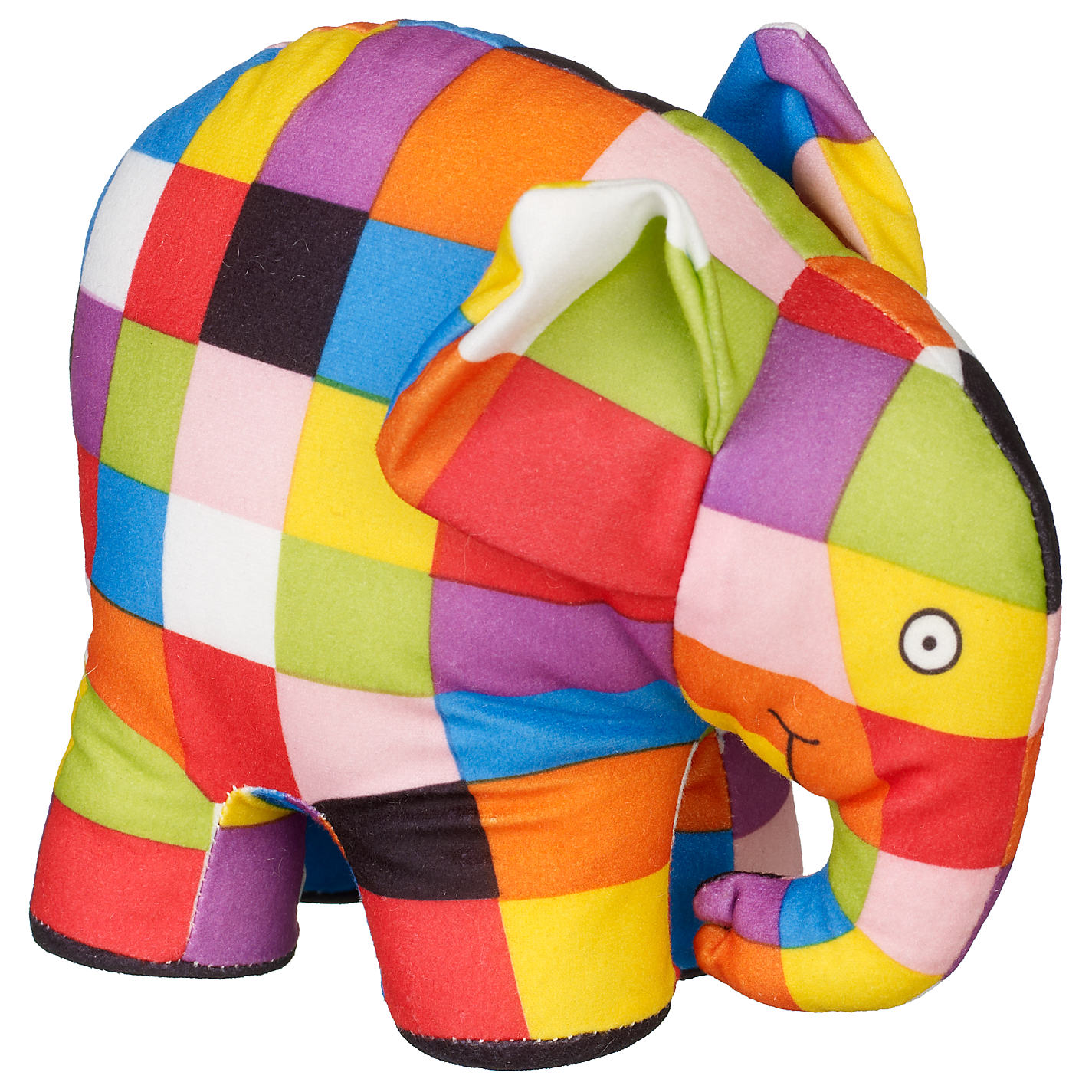 e story of “Elmer” by David Mckee to help learning the colours is one of the best ways I have found when teaching very young learners.
e story of “Elmer” by David Mckee to help learning the colours is one of the best ways I have found when teaching very young learners.
 e story of “Elmer” by David Mckee to help learning the colours is one of the best ways I have found when teaching very young learners.
e story of “Elmer” by David Mckee to help learning the colours is one of the best ways I have found when teaching very young learners.
The book comes with a soft toy of Elmer, which is very useful since young children love being able to touch the characters of the stories they are told.
Once you have told the story showing the book images, it is always good to tell the story again but in a different way so they can hear other voices and accents. For example, it is possible to use a video like this one I found:
Besides telling the story, there is this song about Elmer and his colours that they enjoy singing. It can be sing to the tune of “BINGO” song that we all know:
In order to help them get familiar with the name of the colours in English, you can play TPR games with the Elmer soft toy or some colour flashcards like these ones:
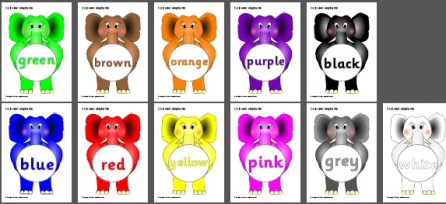
If you want to have your pupils doing a little task about colours, here I have this worksheet where they have to finish colouring Elmer’s body. Once they have done it, you can ask them to tell you which colours they decided to use.
_______________________________________________________
What’s the WEATHER like TODAY?
Most young children have great curiosity in the atmospheric changes. Making a good use of their curiosity towards certain topics can be the best way to catch their attention and motivate them when learning a new language.
Commenting on the weather is a class routine that I always do at the beginning of the lesson. However, to be able to answer to the “What’s the weather like today?” question, they have to acquire the key language.
There is this lovely story from the Hello Robby classbook that I adore using to work on the language related to the weather. It is important that you always tell them the story first with your own voice rather than using the audio or the video version. Children love listening to their teachers telling them stories or singing just for them, it creates a magic bond!
I made this video of the story using the storycards and the audio so we could watch it when trying to re-tell the story altogether and check what bits we forgot.
To let them acquire the weather vocabulary we play some TPR games using some flashcards, this way they start relating the word I say with an image. I use these flashcards:
I also like teaching them a chant where the words “rain” and “sun” are the main focus. The pupils love saying it in different ways: slow, flast, loud and whispering. We laugh so much!!!
Once they have learned the chant, they can work on this worksheet that I made:
Moreover, depending on the age of the preschoolers, there is this “weather wheel” that they could make and take it home so they can play with it.
Oh! I also found this online game that we can play altogether in the classroom if you happen to have a smartboard or just let them know the website so they can play it at home.
Relating the use of the target language to having fun, is the best you can do to make sure the pupils are going to acquire it naturally and as if it was a game.
_________________________________________________
Start counting with Hickory Dickory Dock
I really like this version of the Hickory Dickory Dock story to have a first contact with the numbers in English. Moreover, they also get familiar with the Up & Down movement words.
I recommend you 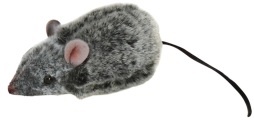 to find a cute mouse soft toy that you can use while telling the story and making it run up and down your pupils little heads. It will make them giggle!
to find a cute mouse soft toy that you can use while telling the story and making it run up and down your pupils little heads. It will make them giggle!
 to find a cute mouse soft toy that you can use while telling the story and making it run up and down your pupils little heads. It will make them giggle!
to find a cute mouse soft toy that you can use while telling the story and making it run up and down your pupils little heads. It will make them giggle!
Next, there is this helpful chant which goes very well to start counting 1, 2, 3 using the same clock as in the story:
It is always good if you use some flashcards to role play the story and let them be part of it. When they are involved they learn more and better. Here there is an example that you could use:
Songs are always important to make sure knowledge is being acquired. Next, you have the traditional rhyme Hickory Dickory Dock that your pupils will love singing and dancing to:
February. Today is Monday rhyme:
Today is Monday, today is Monday.
Monday string beans.
All you hungry children, come and eat it up!
Monday string beans.
All you hungry children, come and eat it up!
Today is Tuesday, today is Tuesday.
Tuesday spaghetti,
Monday string beans.
All you hungry children, come and eat it up!
Tuesday spaghetti,
Monday string beans.
All you hungry children, come and eat it up!
Today is Wednesday, today is Wednesday.
Wednesday soup,
Tuesday spaghetti, Monday string beans.
All you hungry children, come and eat it up!
Wednesday soup,
Tuesday spaghetti, Monday string beans.
All you hungry children, come and eat it up!
Today is Thursday, today is Thursday.
Thursday roast beef,
Wednesday soup, Tuesday spaghetti, Monday string beans.
All you hungry children, come and eat it up!
Thursday roast beef,
Wednesday soup, Tuesday spaghetti, Monday string beans.
All you hungry children, come and eat it up!
Today is Friday, today is Friday.
Friday fresh fish,
Thursday roast beef, Wednesday soup,
Tuesday spaghetti, Monday string beans.
All you hungry children, come and eat it up!
Friday fresh fish,
Thursday roast beef, Wednesday soup,
Tuesday spaghetti, Monday string beans.
All you hungry children, come and eat it up!
Today is Saturday, today is Saturday.
Saturday chicken,
Friday fresh fish, Thursday roast beef, Wednesday soup,
Tuesday spaghetti, Monday string beans.
All you hungry children, come and eat it up!
Saturday chicken,
Friday fresh fish, Thursday roast beef, Wednesday soup,
Tuesday spaghetti, Monday string beans.
All you hungry children, come and eat it up!
Today is Sunday, today is Sunday.
Sunday ice-cream,
Saturday chicken, Friday fresh fish,
Thursday roast beef, Wednesday soup,
Tuesday spaghetti, Monday string beans.
All you hungry children, come and eat it up!
Sunday ice-cream,
Saturday chicken, Friday fresh fish,
Thursday roast beef, Wednesday soup,
Tuesday spaghetti, Monday string beans.
All you hungry children, come and eat it up!
___________________________________________________________
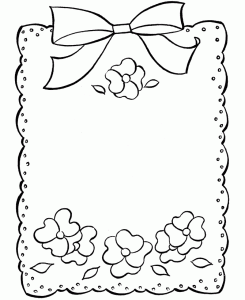 I‘m going to wrap myself in paper
I‘m going to wrap myself in paper
Will YOU be my VALENTINE?
As I have already mentioned before, I really like celebrating festivals in class with my pupils since it helps them learn a bit more about the culture in the English speaking countries. It is an atractive way to catch their attention, specially if we do it through songs or stories.
To start the celebration, with my very young learners we always sing and dance this cute song called “Skidamarink”. The gestures and silly lyrics are fun enough that they will keep the attention of older learners and captivate younger learners even if they can’t follow along completely.
Once you have sung and danced the song several times in different ways (big group, small group or in pairs), your pupils can have a rest colouring this worksheet I made with the song lyrics:
In order to learn some words related to the Valentine’s day, I like usingflashcards to teach these words: flowers, chocolates, cupid, heart, kiss and hug.
It is important to highlight that in a lesson with young learners, it is useless to try to teach more than 10 words. With very young learners the right amount is between 4 and 6.
To have some fun while learning, there are these worksheets that help us learn while celebrating valentine’s day:
There are two short poems that I usually teach. Once they have been presented, each pupil chooses which one they want to try to memorize and write it down inside a worksheet with a frame
Mail myself to you
 I‘m going to wrap myself in paper
I‘m going to wrap myself in paper
I’m going to stick myself with glue
I’m going to tie a BIG bow on me
I’m going to mail myself to you.
Roses are red
roses are red
violets are blue
sugar is sweet
and so are yo
________________________________________________________
Pony horse multicolours
Click on the right colour
Colour yourself!
Bun Bun story
Rabbit and chick
What object is this colour?
Hide and seek
3 colours
_________________________________________
Today I would like to share with you all how you could work Easter with the youngest ones in Primary level.
There is this version of the song Here comes Peter Cottontail that I adore, I find it very catchy. The video itself isn’t great, so you could just play the song and not show the video.
I made this worksheet with the lyrics so the pupils could colour Peter. Inside the rectangular sign I would ask them to write “Happy Easter”.
If you wanted your pupils to have some extra fun doing some Arts related to Easter, I adore this activity called “Fingerprint Chicks”
http://www.kinderart.com/seasons/easter8.shtml
I like asking them to make 5 fingerprint chicks spread out on a sheet of paper and then they have to draw a background for them. It always looks fantastic and you can use them to decorate the classroom walls or even the school corridor.
In case you want to spend several lessons working on Easter, you could watch the adorable film of The tale of Peter Rabbit & Benjamin Bunny by Beatrix Potter.
Here there are a couple of worksheets to work a little bit on vocabulary related to Easter that you could ask them to do so they calm down after having been singing the song for example, or for those who finish first the Arts activity.
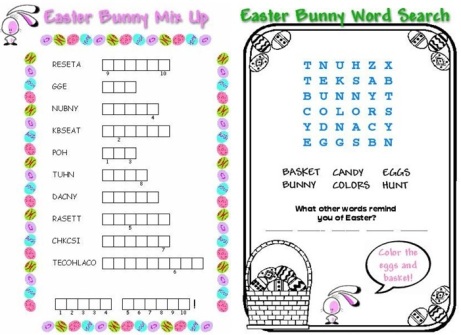
__________________________________________________________
This is one of the most common and popular traditional songs that are used when teaching English to young learners and I am also one of these teachers who likes using it in class .
Preschoolers love anything related to animals which means that any
content you want them to acquire, it will motivate them and help them
acquire it if it goes with the help of some cute animals.
.
Preschoolers love anything related to animals which means that any
content you want them to acquire, it will motivate them and help them
acquire it if it goes with the help of some cute animals.
I use these 9 friendly farm animals as my teaching helpers. They are the ones that my pupils will see in the story and two songs that I included in the lesson plan. It would be great if you had actual toys! Otherwise, flashcards are good, too.
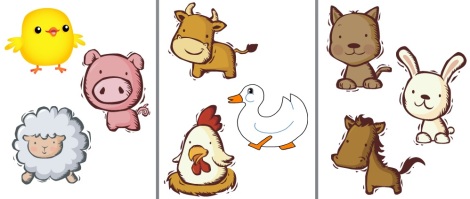
You can introduce the farm animals by putting them inside a magic bag or magic box and then some volunteers take them out one by one. Sometimes, what I do is to hide the flashcards or realia around the classroom and them I tell them to find something new that I have brought. Each time I start a new unit I try to do it differently to keep them amused and interested. Once we have them all out, we speak about their colour, size and if they can fly, walk or swim.
There is this lovable story about Old Macdonald that I found in the Robby Rabbit text book which presents some of the 9 farm animals: cow, dog, horse, duck and sheep. I made the video to share it with my little pupils:
Once you have watched the story, there is this website with perfect online games for preschoolers about the farm animals that you could play altogether in class. I am not a preschooler and I love them If you have a whiteboard, a computer or a tablet; your pupils will have a great time!
http://www.sheppardsoftware.com/preschool/animals/farm/animalfarmflashcards.htm
http://www.sheppardsoftware.com/preschool/animals/farm/animalfarmgame.htm
http://www.sheppardsoftware.com/preschool/animals/farm/animalfarmmovie.htm
http://www.sheppardsoftware.com/preschool/animals/farm/animalfarmcreate.htm
The two songs that I like singing and dancing are these ones:
It is really funny to ask your pupils to pretend to be one of the animals in the song and make the animal sounds, they will laugh a lot! It is always great if you take part in it, as well I am the type of teacher who likes participating in the games and activities I suggest to my pupils.
One oral activity that it is always very successful is to say “The cow says…” and then they all answer “moo” putting their fingers on the head pretending to be cow horns. I do the same with the other 8 animals and for each one we make a different gesture when making the animal sound. You could turn this activity into a competition: the child who doesn’t make the right animal sound sits down and we do it like this until there is only one pupil left who becomes the winner.
Another option is to watch this episode from “Betsy’s Kindergarten Adventures” where she goes on a field trip with her class. Once you have watched it, you can ask your pupils what animals they recognised, how many of each they saw, describe them, etc. When I did it with my groups, I was very pleased to see they were able to answer to all my questions


If you want your pupils to do some written activity, I suggest this worksheet. On one side there are the Old Macdonal song lyrics and on the other side there is this activity where they have to colour the right bits so the hidden animals appear.

________________________________________________________
Pony horse multicolours
Click on the right colour
Colour yourself!
Bun Bun story
Rabbit and chick
What object is this colour?
Hide and seek
3 colours
_________________________________________
Today I would like to share with you all how you could work Easter with the youngest ones in Primary level.
There is this version of the song Here comes Peter Cottontail that I adore, I find it very catchy. The video itself isn’t great, so you could just play the song and not show the video.
I made this worksheet with the lyrics so the pupils could colour Peter. Inside the rectangular sign I would ask them to write “Happy Easter”.
If you wanted your pupils to have some extra fun doing some Arts related to Easter, I adore this activity called “Fingerprint Chicks”
http://www.kinderart.com/seasons/easter8.shtml

I like asking them to make 5 fingerprint chicks spread out on a sheet of paper and then they have to draw a background for them. It always looks fantastic and you can use them to decorate the classroom walls or even the school corridor.
In case you want to spend several lessons working on Easter, you could watch the adorable film of The tale of Peter Rabbit & Benjamin Bunny by Beatrix Potter.
Here there are a couple of worksheets to work a little bit on vocabulary related to Easter that you could ask them to do so they calm down after having been singing the song for example, or for those who finish first the Arts activity.

__________________________________________________________
This is one of the most common and popular traditional songs that are used when teaching English to young learners and I am also one of these teachers who likes using it in class
I use these 9 friendly farm animals as my teaching helpers. They are the ones that my pupils will see in the story and two songs that I included in the lesson plan. It would be great if you had actual toys! Otherwise, flashcards are good, too.

You can introduce the farm animals by putting them inside a magic bag or magic box and then some volunteers take them out one by one. Sometimes, what I do is to hide the flashcards or realia around the classroom and them I tell them to find something new that I have brought. Each time I start a new unit I try to do it differently to keep them amused and interested. Once we have them all out, we speak about their colour, size and if they can fly, walk or swim.
There is this lovable story about Old Macdonald that I found in the Robby Rabbit text book which presents some of the 9 farm animals: cow, dog, horse, duck and sheep. I made the video to share it with my little pupils:
Once you have watched the story, there is this website with perfect online games for preschoolers about the farm animals that you could play altogether in class. I am not a preschooler and I love them If you have a whiteboard, a computer or a tablet; your pupils will have a great time!
http://www.sheppardsoftware.com/preschool/animals/farm/animalfarmflashcards.htm
http://www.sheppardsoftware.com/preschool/animals/farm/animalfarmgame.htm
http://www.sheppardsoftware.com/preschool/animals/farm/animalfarmmovie.htm
http://www.sheppardsoftware.com/preschool/animals/farm/animalfarmcreate.htm
The two songs that I like singing and dancing are these ones:
It is really funny to ask your pupils to pretend to be one of the animals in the song and make the animal sounds, they will laugh a lot! It is always great if you take part in it, as well I am the type of teacher who likes participating in the games and activities I suggest to my pupils.
One oral activity that it is always very successful is to say “The cow says…” and then they all answer “moo” putting their fingers on the head pretending to be cow horns. I do the same with the other 8 animals and for each one we make a different gesture when making the animal sound. You could turn this activity into a competition: the child who doesn’t make the right animal sound sits down and we do it like this until there is only one pupil left who becomes the winner.
Another option is to watch this episode from “Betsy’s Kindergarten Adventures” where she goes on a field trip with her class. Once you have watched it, you can ask your pupils what animals they recognised, how many of each they saw, describe them, etc. When I did it with my groups, I was very pleased to see they were able to answer to all my questions

If you want your pupils to do some written activity, I suggest this worksheet. On one side there are the Old Macdonal song lyrics and on the other side there is this activity where they have to colour the right bits so the hidden animals appear.

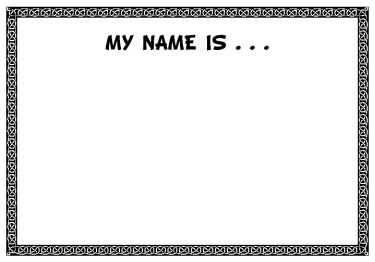
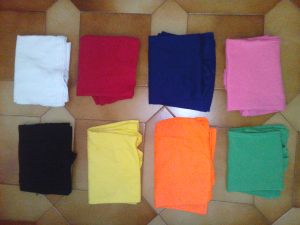
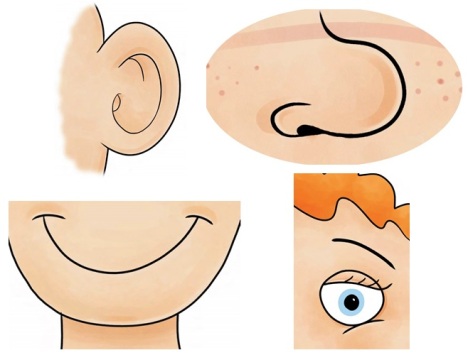
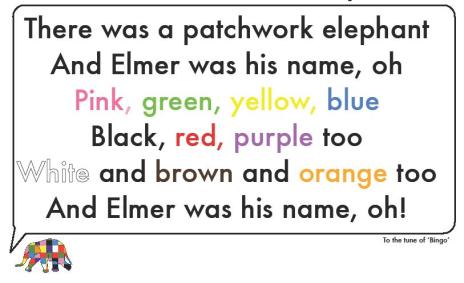
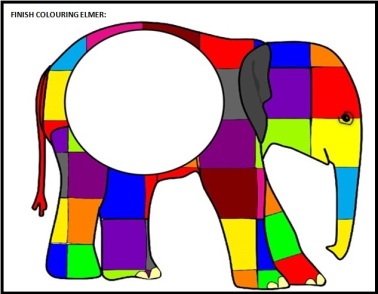

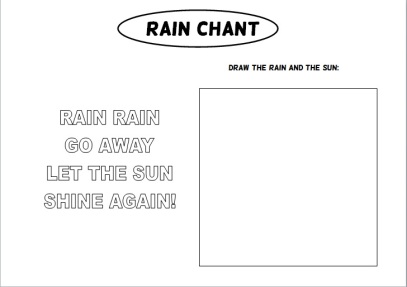
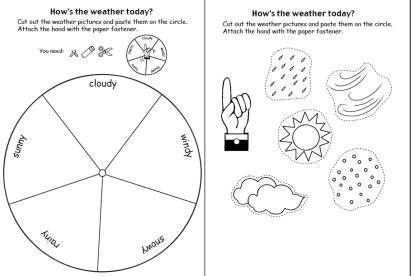
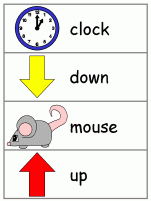


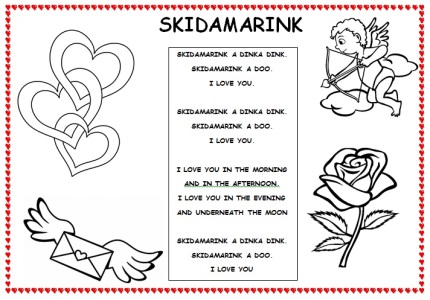

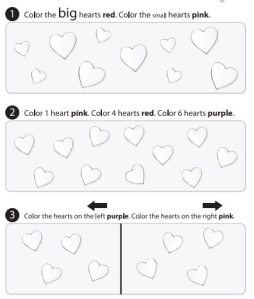
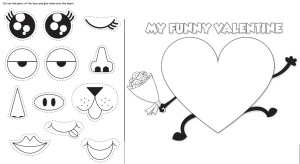

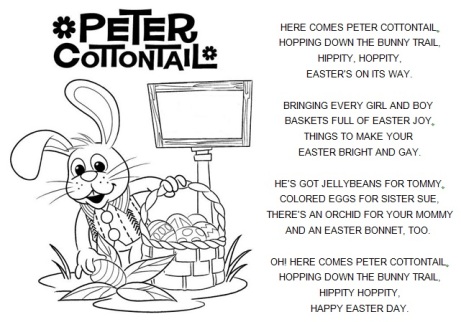
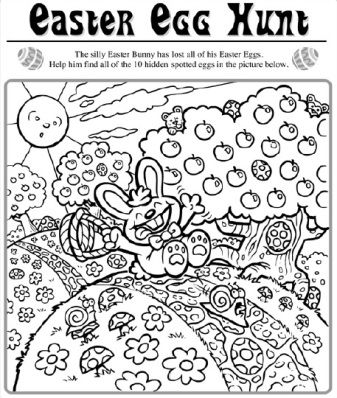
No hay comentarios:
Publicar un comentario